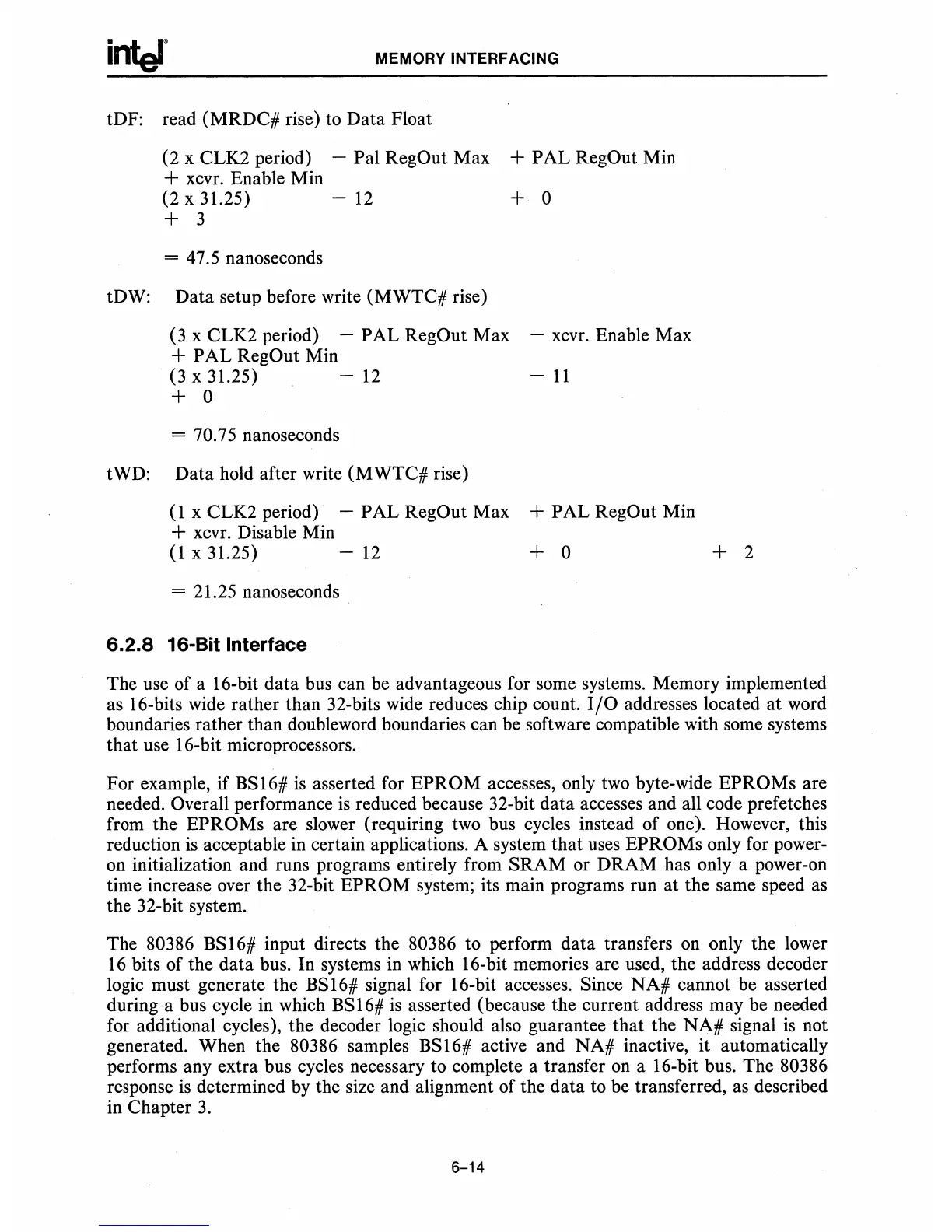MEMORY INTERFACING
tDF: read
(MRDC#
rise) to Data Float
(2 x CLK2 period) - Pal RegOut Max
+ PAL RegOut Min
+ xcvr. Enable Min
(2 x 31.25)
-
12
+
0
+
3
= 47.5 nanoseconds
tDW:
Data setup before write
(MWTC#
rise)
(3 x CLK2 period) - PAL RegOut Max
- xcvr. Enable Max
+
PAL
RegOut Min
(3
x 31.25)
-
12
-11
+
0
= 70.75 nanoseconds
tWD:
Data hold after write (MWTC# rise)
(1
x CLK2 period)
- PAL RegOut Max
+ PAL RegOut Min
+ xcvr. Disable Min
(1
x 31.25)
-
12
+
0
+
2
= 21.25 nanoseconds
6.2.8
16-Bit Interface
The use of a 16-bit data bus can be advantageous for some systems. Memory implemented
as 16-bits wide rather than 32-bits wide reduces chip count.
I/O
addresses located at word
boundaries rather than doubleword boundaries can be software compatible with some systems
that use 16-bit microprocessors.
For example, if BS16#
is
asserted for EPROM accesses, only two byte-wide EPROMs are
needed. Overall performance
is
reduced because 32-bit data accesses and all code prefetches
from the EPROMs are slower (requiring two bus cycles instead of one). However, this
reduction
is
acceptable in certain applications. A system that uses EPROMs only for power-
on
initialization and runs programs entirely from SRAM or DRAM has only a power-on
time increase over the 32-bit EPROM system; its main programs run at the same speed as
the 32-bit system.
The 80386 BS16# input directs the 80386 to perform data transfers
on
only the lower
16
bits of the data bus. In systems
in
which 16-bit memories are used, the address decoder
logic must generate the BS16# signal for 16-bit accesses. Since NA# cannot be asserted
during a bus cycle in which BS16#
is
asserted (because the current address may be needed
for additional cycles), the decoder logic should also guarantee that the
NA#
signal
is
not
generated. When the 80386 samples BS16# active and NA# inactive, it automatically
performs any extra bus cycles necessary to complete a transfer
on
a 16-bit bus. The 80386
response
is
determined by the size and alignment of the data to be transferred,
as
described
in Chapter
3.
6-14

